Secret places of Vienna, which you will not find in a typical guidebook
Travels Four Eyes / / December 19, 2019
Oh Vienna! Hold the square Stephansplatz, admire St. Stephen's Cathedral, then take the Domgasse, look at the home of the great Mozart. Reach Vehrnego market (Hoher Markt), enjoy the magic of "dancing" Anchor hours. Go ahead and evaluate the severity of the Old Town Hall. Walk to the imperial residence of the Hofburg and the Vienna Opera building. Look at the cafe "Sacher". Then turn in the direction of the New Market (Neuer Markt) and go back to the Stephansplatz to the example of the House Haas compare modern and classical architecture. Now set aside the typical guidebook. We will open for you a completely different vein.
1. butterfly house
Hofburg palace complex does not shy away from any tourist coming to Vienna. But about the "Butterfly House", which is located in the palace park Burggarten, for some reason few people know.
Meanwhile, the place is absolutely amazing. They collected dozens of species of exotic butterflies from Costa Rica, Thailand, the Philippines and other countries. In this tropical beauties all conditions: temperature in the pavilion never drops below 26 degrees and the humidity - 80%. In addition to insects feel at home, there is growing accustomed to their habitat plants. Butterflies gracefully flit between flowers of hibiscus and lanthanum.
Do not just enjoy the beauty of this tropical oasis, but watch as the butterflies "drinking" nectar and witness the miracle - the "birth" of a new butterfly pupa.
Address: Schmetterlinghaus Palmenhaus, Burggarten Hofburg
Site:schmetterlinghaus.at
Mode of operation: from April to October: Monday to Friday - from 10:00 to 16:45, Saturdays, Sundays and public holidays - 10:00 to 18:15; November to March: Monday to Sunday - 10:00 to 15:45

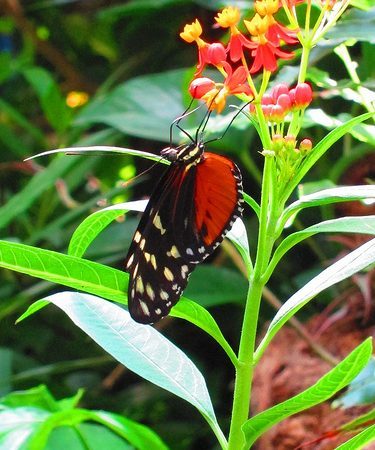


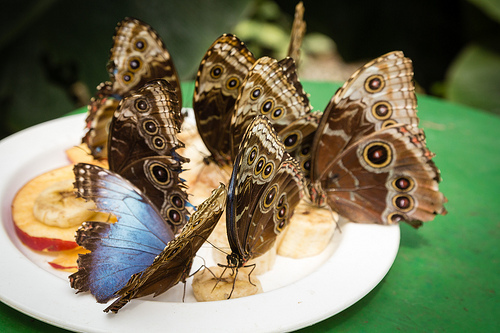
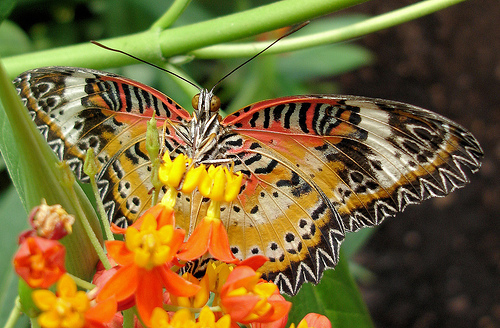
A photo: 1, 2, 3, 4, 5, 6
2. coffee Museum
If you ask, what smells Vienna? Answer - coffee. This drink has a special role in the history and culture of the city. The first coffee houses appeared in it in the XVII century, after the Turkish siege, and to this day is not just cafes. This is the place for exquisite relaxation.
Be sure to take a look at one of the Viennese coffee houses, to feel the atmosphere, as well as go to the Coffee Museum to learn the history of the drink.
Museum coffee (Kaffeemuseum) was opened in Vienna in 2003. It is the merit of a private collector and big fan of coffee Edmund Mayr (Edmund Mayr). It was he who collected most of the collection, now houses four exhibition halls.
In the first one you will learn the history of coffee Viennese, second look at an old coffee utensils (Turks, cups, saucers), and "meet" with some famous coffee people. Among the exhibits, for example, there is a coffee mug of Lenin. The leader of the world proletariat, sipping from her coffee, while in Finland. In the fourth and third halls you will find all sorts of devices for preparation of coffee from coffee machines to coffee grinders.
In addition, a variety of coffee seminars are held in the Museum. So, you can, for example, take a master class barista.
Address: Vogelsanggasse, 36
Site: kaffeekompetenzzentrum.at
Vicki: coffee Museum
Mode of operation: Monday to Thursday - from 9:00 to 18:00, Friday - from 9:00 to 14:00



A photo: 1, 2, 3
3. Treasury of the Teutonic Order
Teutonic military order was founded in the XII century and has evolved rather quickly into an influential political organization. Although it is more like a state, because the Order had its own chapter (Grand Master), the Prime Minister (landmeyster) Commander in Chief (Marshal of the Order), the Minister of Health (the supreme Hospitaller), the Minister of Finance (Treasurer) and etc.
During the Crusades to Palestine in Jerusalem was founded a chapel in the name of the Virgin Mary. And the same name is the residence of the Austrian contemporary Teutons, based in Vienna. Brothers and sisters are still united by the motto «Helfen - Wehren - Heilen» ( «Help - Protect - Heal "), but, in contrast to the Middle Ages, military expansion is no longer showing, engaged exclusively spiritual matters.
And guided tours to explore the history of the Teutonic Order. In convent between church communication. Stephen and the Treasury, is the Viennese Treasury of the Teutonic Order. The exposition of a small museum, but where you'll see the crusaders weapons, their spoils of war from Malaysia and Persia or fossilized entrails of goats (knights believed that they possess magical properties)? But the most bizarre thing in the Treasury - "tree" of shark teeth. With it, the Teutons determined whether the food was poisoned.
Visiting the museum will cost you only 4 euros and for children under 6 years free entrance at all.
Address: Singerstrasse, 7
Site:deutscher-orden.at
Mode of operation: Tuesday, Thursday, Saturday - from 10:00 to 12:00, Wednesday and Friday - 15:00 to 17:00
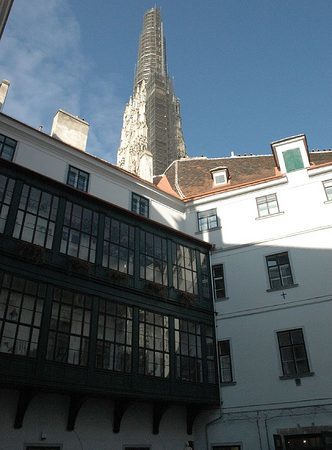




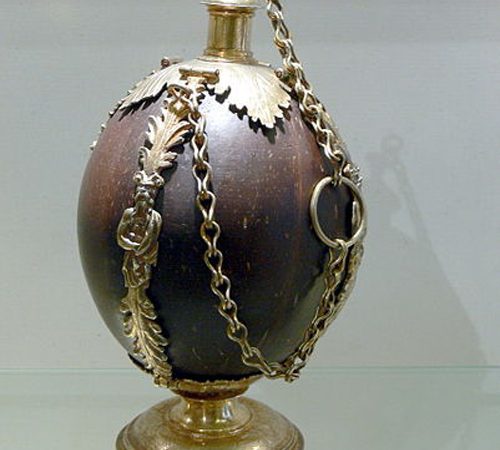
A photo: 1, 2, 3, 4, 5, 6
4. Viennese gasometers
At the end of the XIX century Vienna heated and lighted coke oven gas. For these purposes in the capital of Austria were built four huge gas tank of 70 meters high and 60 meters in diameter, four towers for storing coke oven gas (each about 90 000 m³ in volume).
Soon, however, in the second half of the twentieth century, the city came to natural gas, and gasometers become unnecessary. Therefore, at the end of the century the city authorities announced a contest for the best project for the reorganization of storage facilities and at the turn of the twenty-first century, in Vienna, a new mixed-use complex.
Special equipment was dismantled, held inside a complete renovation, and the facade and the roof left unchanged, and as a result gasometers A, B, C and D have become residential buildings (800 apartments + 70 campuses), shops, a cinema, a concert hall with a capacity of about 3 000 people, office and municipal premises.
Wander through the territory of the Gasometer in Vienna can be independently or with a guide, which you can hire on the complex site. In any case, you will certainly feel the special atmosphere of this place - the inhabitants of the former gasometer, if community members live unitedly and in unison.
Address: Guglgasse, 6
Site: wiener-gasometer.at
Vicki:Viennese gasometers


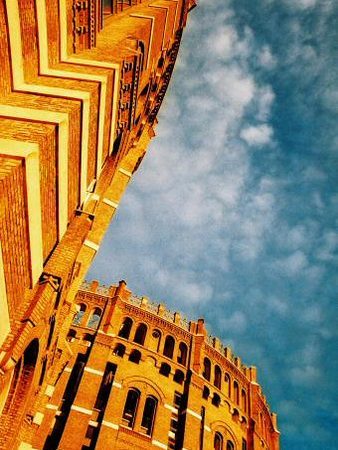
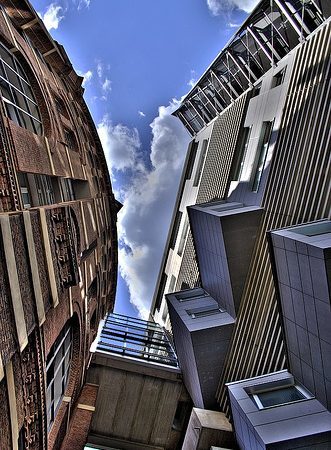





A photo: 1, 2, 3, 4, 5, 6, 7, 8, 9
5. Gallery street art
Vienna - a treasury of world art. Gallery Belvedere, the Kunsthistorisches Museum, Albertina and the Leopold Museum to store thousands of immortal works of great artists. It would seem, from this "temple of classical painting" take avant-garde urban-plot?
You will be amazed, but street art is alive and well, even in a strict power Vienna. So, in 2006, the Viennese street artists came together to communicate and share experiences, and to create a gallery Inoperable. Together they have created a project for the development of street art, which would organically fit into the cultural and historical landscape of the city.
Since then, the gallery holds regular exhibitions of famous street artists, including the famous Australian artist Shida, now living in Vienna, the legendary Tara McPherson (Tara McPherson) and others. In addition, Inoperable often spends street art festivals and performances.
Address: Burggasse, 24
Site:inoperable.at
Mode of operation: Tuesday to Friday - 13:00 to 18:00 Saturday - 13:00 to 17:00
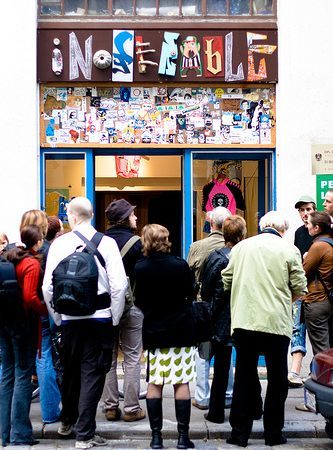
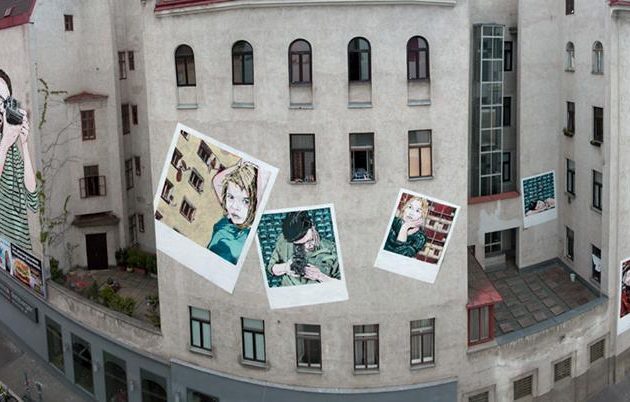



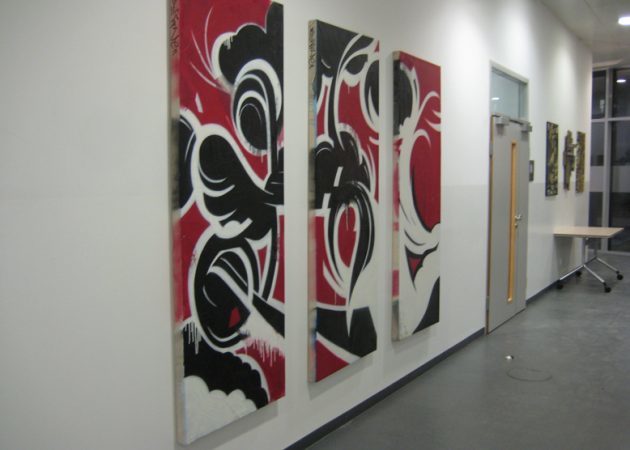
A photo: 1, 2, 3, 4, 5, 6
6. Center for Photography WestLicht
Another atypical artistic place for the Austrian capital - photos WestLicht. Even its location can be called original. Center for Photography is located in the attic of the house, in which up to 1950 was a glass factory. In 2001 a group of enthusiasts in love with the genre of photography, combined to create WestLicht. His mission - the development and popularization of photography in Austria.
WestLicht - and at the same time a museum and a photo exhibition. In the stands, with special lighting - cameras, flashes, lenses and other equipment; on the walls - the first pictures taken by daguerreotype, as well as work Elfi Semotan, Peggy Sirota, Mary Ellen Mark, and other world-famous artists.
WestLicht exposition includes about 500 technical devices, different ages and for different purposes. In chronological order the evolution of photography. The highlight of the collection - "forefather" of contemporary cameras «Susse Frères Daguerreotype Camera» in 1839.
A separate part of the exhibition is dedicated to the tourist shooting reportage. This collection of photographs is not easy, since the middle of the XIX century to the present day - it is an amazing journey that simultaneously moves through time and space. In addition, there are rooms dedicated to the genre of nude, war photography, photojournalism and spooky Viennese Actionism.
Ticket Center photos WestLicht worth 6.5 euros, and believe me, it is a tiny price to pay for the pleasure that you get when you visit.
Address: Westbahnstraße, 40
Site:westlicht.com
Mode of operation: Tuesday, Wednesday, Friday - 14:00 to 19:00; Thursday - 14:00 to 21:00; Saturday, Sunday and public holidays - 11:00 to 19:00

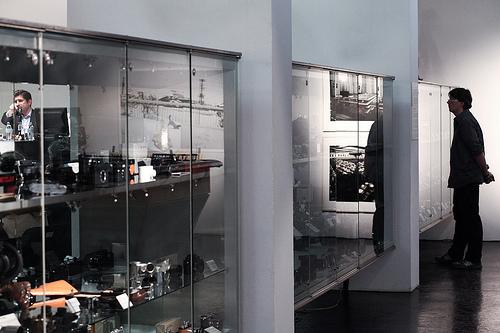

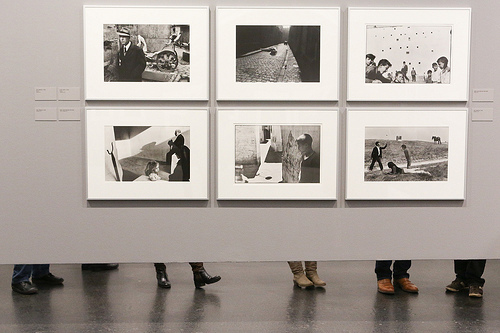
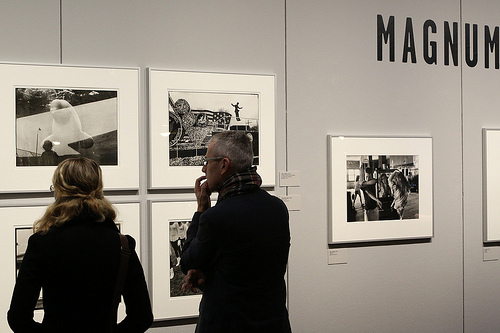

A photo: 1, 2, 3, 4, 5, 6
7. Lainzer
On the outskirts of Vienna, in the Hietzing district, it is a unique place - Reserve "Lainzer Tiergarten". Its area is 2450 m, most of which (1945 m) occupied by the Wiener fairy forest. Majestic oaks and beeches are in these places already about 400 years old. Just imagine, what's the air!
The forest is home to about 94 species of birds, including rare, dozens of species of reptiles (salamanders, newts alpine). Of the more "serious" fauna - aurochs, wild boars, deer, mouflon and other animals. But to feed and to approach them is strictly forbidden, "Lainzer Tiergarten" - not a zoo, animals are not tamed.
The reserve laid several trails for walks and contemplation of virgin nature. In addition, it created several entertainment venues: children's playground, picnic area, lookout tower, etc.
But of particular interest, located on the reserve, Villa Hermes. This beautiful palace was built in 1886 by order of Franz Joseph I. Emperor He passionately loved his wife, Empress Elizabeth, and she loved to travel. Therefore, the monarch decided to build a palace, from which his wife did not want to leave.
Surprise success. Villa turned out really amazing: luxurious interior decoration, garden with pergola and antique statues, a fountain and a stable for the horses of the Empress. But most importantly, that it was one of the first buildings in Vienna, where electricity and telephone were conducted.
Sisi often dropped in to the Villa Hermes, while in 1898 the anarchist Luigi Lykken killed her stabbed in the heart.
Today, Villa Hermes is open for tourists from Tuesday to Sunday from 10 to 18 hours. Login - 4 euros. Visiting the "Lainzer" free.
Address: Hermesstraße
Site:lainzer-tiergarten.at
Vicki: Lainzer
Mode of operation:Reserve work schedule changes, now it is open daily from 8:00 to 20:00



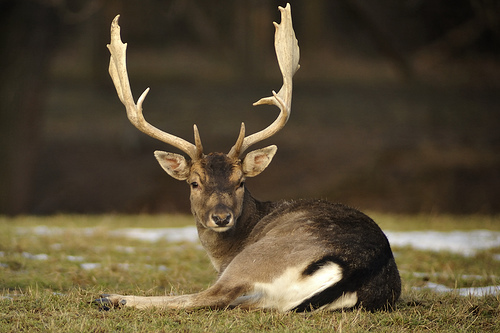



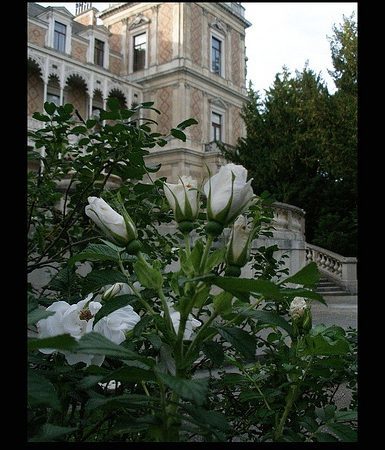

A photo: 1, 2, 3, 4, 5, 6, 7, 8, 9
8.Muzey tobacco
In Vienna, a lot of museums. Chief among them - is, of course, the Museum of Modern Art, the Leopold Museum, Architecture Center, and others. But apart from them, in the same quarter of the Museum, there is also a small, inconspicuous at first glance, but very interesting museum.
One of them - "Tobacco Museum» (Österreichisches Tabakmuseum). This is the oldest and largest museum in the world of tobacco. Its history began in 1873 and is closely connected with the company Austria Tabak.
The museum contains exquisite tube, unique lighters and cigars, paintings and all sorts of thematic printed products. The pride of the collection - the only one remaining in the world of automatic sale of tobacco and cigars.
Visiting Vienna "Tobacco Museum" will be interesting not only for smokers but also for those who have not done in my life any tightening. After all, this institution - not the promotion of smoking, it is, primarily, a historical exhibition.
Address: Mariahilfer, 2
Mode of operation: Tuesday, Wednesday and Friday - from 10:00 to 17:00; Saturday - from 10:00 to 19:00, Sunday and public holidays - 10:00 to 14:00

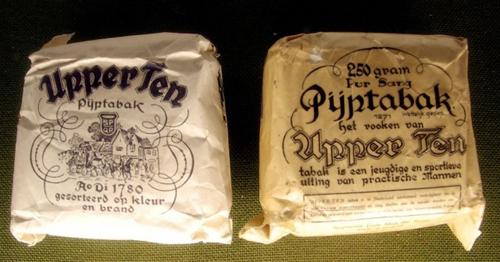
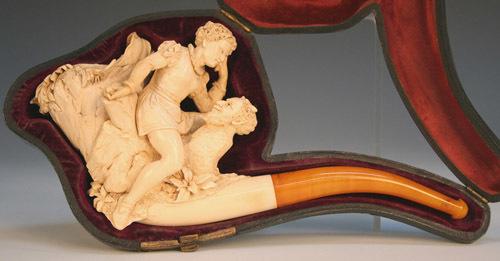
A photo: 1, 2, 3
9. House of Music
Gaidai, Mozart, Beethoven, Schubert, Strauss, Mahler - not a complete list of great composers at different times lived and worked in Vienna.
Historically, Vienna - musical capital of Europe. It is not surprising that it was there in 2000, they opened the House of Music.
It is situated in the palace of the Archduke Charles, where he subsequently lived well-known German composer Otto Nicolai, founder of the Vienna Philharmonic Orchestra. House music has 4 floors and an area of over 5000 sq.m. (Plus a gift shop and restaurant).
The uniqueness of this place is that it is not just the exposition of ancient musical instruments and music books, but from the sounds. So, on the second floor there is a series of interactive touch screens that allow you to experiment with different sounds. There you will learn how to perceive the sounds of the baby in the womb as rustling paper as "sings" the city.
On the third floor are exhibits related to the composers of the classical Viennese school and new. But then again exhibits "living." For example, the "Virtual Conductor" - Have you ever ran the Vienna Philharmonic? ;)
The fourth floor is dedicated to the sounds of the future: what will be the Music in the XXI century? Particular attention is deserved Hall «Mind Forest» ( «Les consciousness"), sing along with it trees and walls respond to the motion.
It is noteworthy that to visit the House of Music you do not require an accompanying - the museum is equipped with an audio-guide, which gives visitors the valuable information in several languages, including Russian.
Address: Seilerstätte, 30
Site:hausdermusik.at
Vicki:House of Music in Vienna
Mode of operation: daily from 10:00 to 22:00
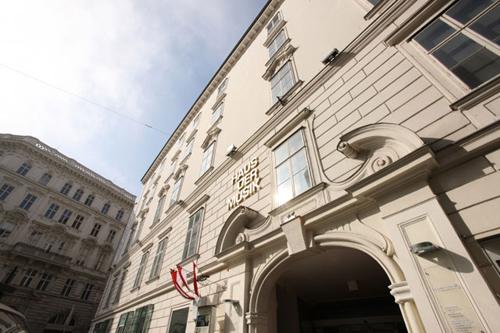

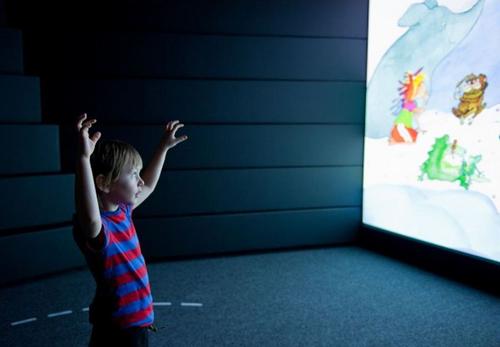


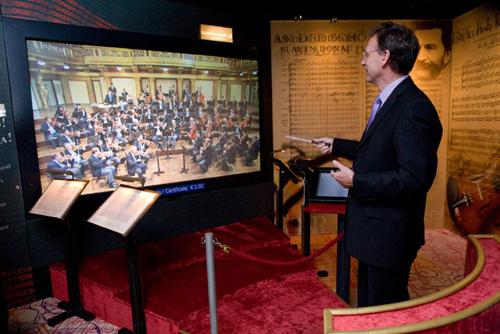
A photo: 1, 2, 3, 4, 5, 6
10. tower crazy
Do you want to tickle your nerves? Pay 2 euros and go to the "Federal Pathologic-Anatomical Museum» (Pathologisch-anatomisches Bundesmuseum), and the people - Tower crazy.
Joseph II - King of Germany and Archduke of Austria - adhere to the advanced views and was a prominent representative of enlightened absolutism. The monarch ordered to organize in Vienna psychiatric hospital to help the mentally ill. So in 1784 and there was this grim 5-storey tower.
Hospital included 139 wards resembling, however, longer prison dungeons. Especially in the department for violent patients.
In 1936 he began a new stage in the history of the tower - building began to turn into a museum. True, the eeriness of it only increased, because it was not about the art gallery and museum Pathology, the official status of which acquired in 1976.
For almost a century old museum has accumulated a lot chilling exhibits. Dissected skull, human organs preserved in alcohol, including those afflicted with various diseases and parasites. "Pearl" of the exhibition - the head of the murderer of the Empress Sisi.
And despite the fact that a part of the museum's collection has been lost due to the bombing of World War II, in the Tower of crazy it is something to see! However nervous the entrance there is clearly contraindicated.
Address: Uni Campus, Spitalgasse, 2
Site:narrenturm.at
Mode of operation: Wednesday - from 10:00 to 18:00, Saturday - from 10:00 to 13:00
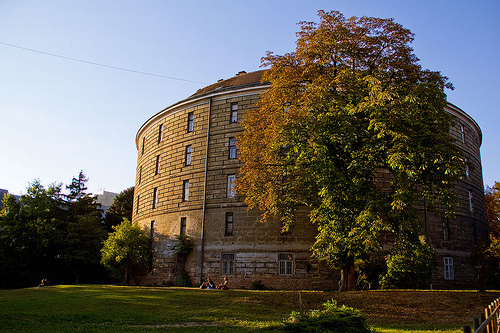


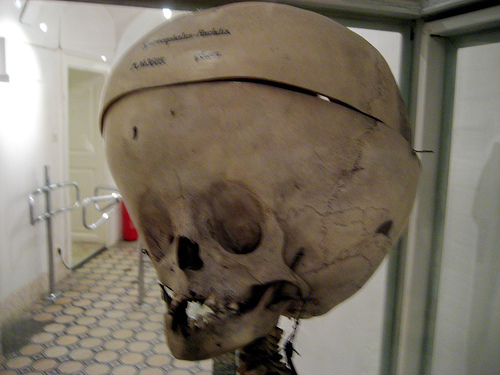
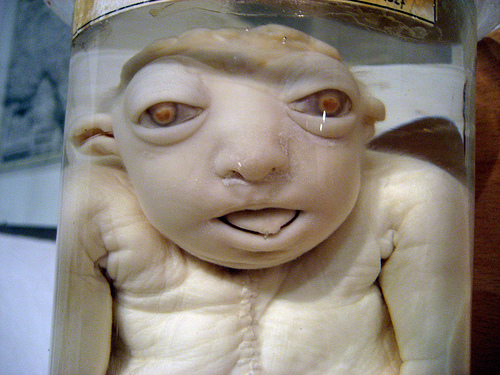
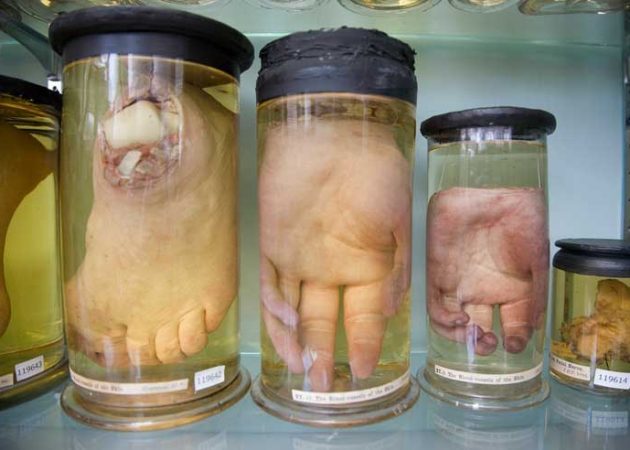
A photo: 1, 2, 3, 4, 5, 6
11. ladder Shtrudlhofshtige
Shtrudlhofshtige Ladder (Strudlhofstiege) is one of the pearls Viennese architecture Art Nouveau style. It is located in the Alsergrund (9th district of Vienna), and connects with the street Liechtensteinstraße lane Strudlhofgasse. The staircase is made of mannersdorfskogo limestone, decorated with wrought iron railings, small white tables, elegant lamps and wild grapes. The architectural ensemble is crowned by a terrace with a fountain in the form of a fish head.
This staircase built in 1910, designed by Johann Theodor Jaeger and is named after the sculptor and painter Peter Strudel, who in 1690 founded nearby from this place his estate. However, when it comes to mind most often mention another name.
Austrian writer Heimito von Doderer - man challenging fate. During the First World War, he volunteered for the front and fell into Russian captivity. He was sent to a camp near Krasnoyarsk, where he realized his vocation - writing. In 1920 he returned to Vienna, and in 1930 published a novel on the Civil War in Russia - "The Mystery of the empire." In 1933, von Doderar joined the National Socialist Party, and 10 years later was back in Russia ...
In 1951, the writer published another book "Strudlhofstiege» (Die Strudlhofstiege), whose action takes place just on the stairs named Peter Strudel.
Address: Strudelhofgasse
Vicki:Heimito von Doderer
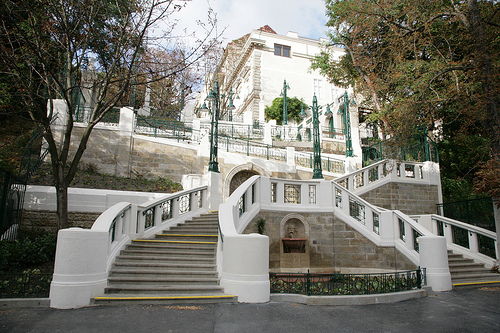
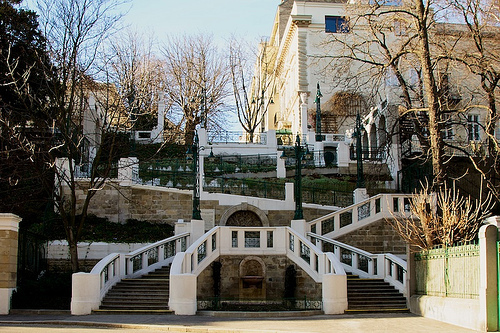


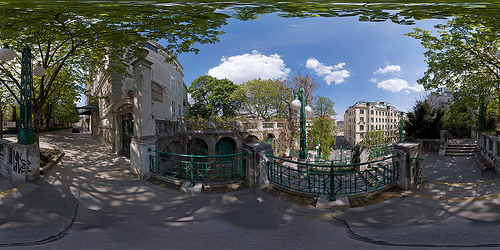

A photo: 1, 2, 3, 4, 5, 6
Oh Vienna! Beautiful and right, with a glorious history and modernity measured. This city is considered one of the most comfortable life: a stable economy, a lot of cultural events, good environment, no troubles and disasters. At least, so it appears to tourists. But, as you see, old Vienna is not as much as it seems at first glance. If you look at it from a different angle, you can find a lot of unusual and interesting places.
Write in comments about the famous secret places of Vienna.



